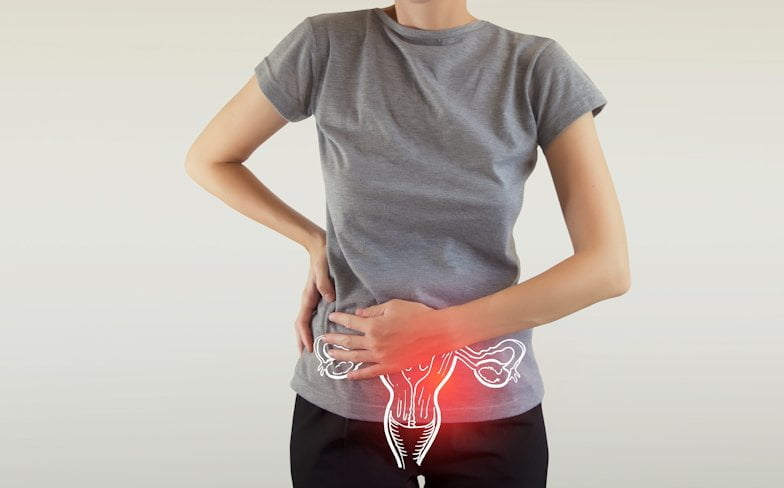Physiotherapists are trained to assess and diagnose a wide range of musculoskeletal, neurological, and cardiopulmonary conditions, and use a variety of techniques to help patients achieve their goals and improve their quality of life. In recent years, there has been a growing awareness of the importance of physiotherapy in Women’s health, Men’s health as well for Pelvic Floor rehabilitation and for addressing incontinence.
Physiotherapy and Women’s Health
Women’s bodies are unique and are subject to a variety of physiological changes throughout their lives, including pregnancy, childbirth, menopause, and aging. These changes can often result in pain, discomfort, and loss of function, making physiotherapy an important part of maintaining overall health and wellness.
There are a number of areas that physiotherapy concentrated on Women’s Health also referred to as Pelvic Floor Physiotherapy, Pelvic Floor Rehabilitation or Pelvic Rehabilitation Physiotherapy can help with. These include:
Pelvic Floor Physiotherapy
Pelvic is a type of physical therapy that focuses on the muscles, ligaments, and tissues that make up the pelvic floor. These muscles are responsible for supporting the organs in the pelvis, including the bladder, uterus, and rectum. When these muscles become weakened or damaged, it can lead to a variety of health problems, including urinary incontinence, pelvic pain, and sexual dysfunction.
Pelvic floor physiotherapy is a non-invasive and effective treatment option for many of these conditions. It involves the use of exercises, manual techniques, and other therapies to help improve the strength, flexibility, and coordination of the pelvic floor muscles.
One of the primary goals of pelvic floor physiotherapy is to help patients develop an awareness of their pelvic floor muscles and learn how to control them properly. Many people are unaware of their pelvic floor muscles or may not know how to use them correctly. Pelvic floor physiotherapists can teach patients how to perform pelvic floor exercises, also known as Kegels, which involve contracting and relaxing the pelvic floor muscles.
Another important aspect of pelvic floor physiotherapy is manual therapy. This may involve the use of massage, stretching, or other techniques to help release tension in the pelvic floor muscles. Manual therapy can also be used to address trigger points, or areas of tightness and tenderness in the muscles, which can contribute to pelvic pain.
Pelvic floor physiotherapy may also include biofeedback, which involves the use of sensors and electrodes to monitor the activity of the pelvic floor muscles. This can help patients learn how to contract and relax the muscles correctly and can provide valuable feedback to the physiotherapist about the patient’s progress.
Pelvic floor physiotherapy can be helpful for a variety of conditions, including:
- Urinary incontinence: Pelvic floor exercises can help strengthen the muscles that control the bladder and reduce episodes of urinary leakage.
- Pelvic pain: Manual therapy and other techniques can help alleviate pain and discomfort in the pelvic region.
- Sexual dysfunction: Pelvic floor exercises can improve the strength and control of the muscles involved in sexual function, leading to improved sexual health.
- Postpartum recovery: Pregnancy and childbirth can weaken the pelvic floor muscles, leading to urinary incontinence and other issues. Pelvic floor physiotherapy can help women regain strength and function in these muscles after giving birth.
Pelvic floor physiotherapy is a safe and effective treatment option for many conditions related to the pelvic floor. If you are experiencing symptoms such as urinary incontinence, pelvic pain, or sexual dysfunction, consider speaking with your healthcare provider about the possibility of pelvic floor physiotherapy. A qualified physiotherapist can help you develop an individualized treatment plan to address your specific needs and improve your overall quality of life.
Physiotherapy During and After Pregnancy
One area of women’s health that physiotherapy plays a key role in is during and after pregnancy. Pregnancy can cause a number of changes to a woman’s body, including an increased risk of back pain, pelvic girdle pain, and other musculoskeletal conditions. Physiotherapy can help to alleviate these symptoms by providing exercise programs, manual therapy, and education on how to manage pain and maintain proper posture.
Additionally, after delivery, Physiotherapy can help to restore muscle tone and strength, improve mobility and function, and address any issues related to the pelvic floor and incontinence.
Physiotherapy for Osteoporosis
Another area where physiotherapy can be beneficial for women is in the treatment of osteoporosis. Osteoporosis is a condition characterized by low bone density and increased risk of fractures, and it affects many older women. Physiotherapy can help to improve bone density, increase muscle strength and coordination, and reduce the risk of falls and fractures.
Physiotherapy During Menopause
Menopause is another critical life stage where physiotherapy can make a difference. Hormonal changes during menopause can cause a number of physical symptoms such as hot flashes, vaginal dryness, and joint pain. Physiotherapy can help to alleviate these symptoms by providing exercises and techniques to help improve flexibility and mobility, and manage pain and stiffness.
In conclusion, physiotherapy is an essential component of women’s health, providing a wide range of services that are tailored to meet the unique needs of women throughout their lives. Whether you are pregnant, recovering from childbirth, experiencing menopause, or simply looking to improve your overall health and wellness, physiotherapy can help.
Interested in learning more? Contact us, call, or book an appointment or complimentary consultation.

